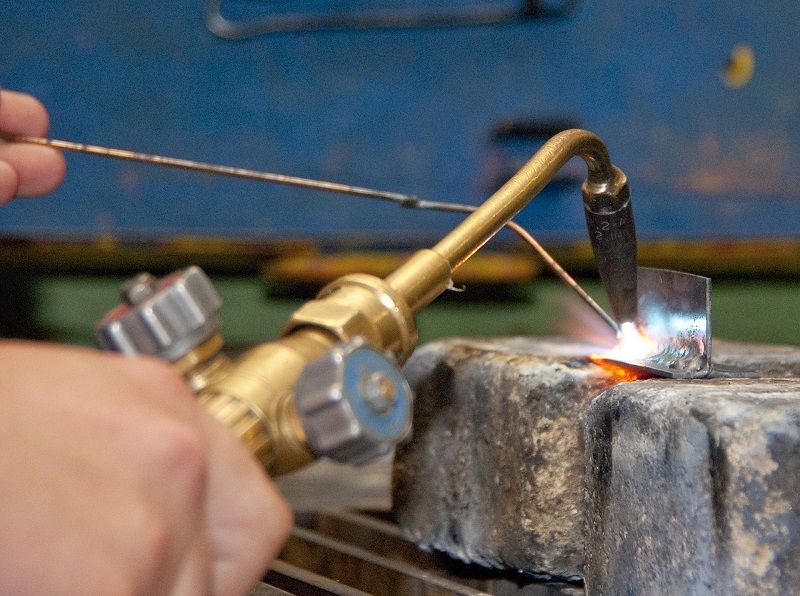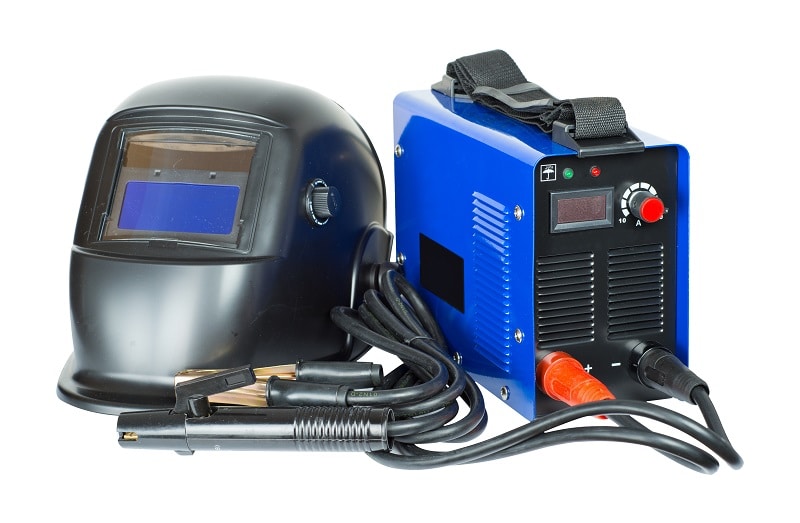What are Taps on a Welding Transformer? (A Complete Guide)
Last Updated on

The voltage and the current used in welding are adjusted by the welding transformer’s primary and secondary taps. To know how taps in a welding transformer function, you need to have a deeper understanding of a welding transformer’s working principle.
Therefore, we shall dig deeper to know what taps on a welding transformer are. Keep reading!
What’s a Welding Transformer?
It’s a dual-winding transformer. The primary winding has a branching head used to change the arc ignition voltage. Also, a tap button is used to change the secondary side’s no-load voltage. The primary and secondary windings are connected separately to the two iron core legs.
In this way, the transformer will have a larger leakage reactor. Then, the secondary side’s terminal voltage will drop severely if the current is increased.
An iron core reactor is joined in series in the supplementary winding circuit to set the welding current. If you alter the length of the reactor’s air gap, the current increases.

How Does a Welding Transformer Work?
Welding transformers work by modifying the voltage to the one needed to create a welding arc. The arc recovery time is time taken for the voltage to increase from zero to the voltage needed to weld.
It’s crucial to keep the arc recovery time low to make sure that the arc is stable. If it doesn’t stay low, the cathode may get chilly. It’ll halt the production of enough ions and electrons to form and retain an arc.
One way of lessening the time is by increasing the circuit voltage of the source of electricity. For lower voltage top value, the arc recovery time is considerably lower. The welding circuit must have an inductance that leads to a difference in the phase between the current transitory and voltage.
Taps assist in changing the voltage to produce your preferred arc. If the voltage is low, then the taps will increase the current. A low voltage hinders the formation of your preferred arc because heat is lost through the cathode.
If the current reaches up to 250 amperes, you can create an arc easily. It needs a voltage of up to 60 volts. You can increase the voltage up to 80 volts if the current is lower than 70 amperes.
Nonetheless, a voltage increase constitutes a security risk and also weakens the arc. It leads to an open-circuit voltage ratio of the welding transformer. In this situation, taps are of great value because they maintain the voltage within the constraints and, therefore, stop any damage. Now that we know the function of the taps on a welding transformer, let’s. look at how these taps are constructed.
How are Taps Constructed in a Welding Transformer?
In the secondary windings, there are taps on a welding transformer connected to a plug holder or a high-current button. Usually, they’re used to lessen the voltage between 15 and 45 volts. One end of the secondary winding is connected to the welded parts, while the other is joined to an electrode.
Taps on the welding transformer stop heat-up issues by minimizing the voltage needed. To change the current used in welding, you can fasten points on the secondary coil. Some welding transformers have taps attached to the secondary coil windings to offer the right voltage.
These taps deliver full power to the terminals. Many big welding transformers usually have several phase inputs but smaller ones normally have one-phase inputs. When the electric current is high, so much heat is produced in the secondary windings. It’s because of the resistance between the anode and the welded parts.
The impedance in welding transformers is usually higher than that of ordinary transformers. An arc is formed due to the high impedance. The electric current stays in the form of a wave, and the voltage is contorted in the welding current.

Where are Taps Located in a Welding Transformer?
You can find the taps at a distinct position on the secondary coil. Connecting on the coil’s last layer is the primary method of providing taps. The coil’s layer is located away from the finish line.
Between the taps numbered four and five on the tap part, there are breaks in most instances. Also, there’s a jumper offered for a coil that allows you to choose the voltage you want at the particular nameplate.
Connecting the loop located at the end of the secondary coil with no pauses between the taps is another configuration of the tap. The terminal tap (typically tap numbered seven) is found close to the finish line.
The wye or delta connection in this tap configuration (on the input side) is shut at the tap based on the nameplate. This taps configuration is known as “end of the coil taps” or “the line taps.”
The tap jumpers connect the two ends of a coil. In the other configuration, the tap jumpers join only one end to the significant phase terminal. And, on the phase terminal, the position of the tap coincides with your preferred voltage.
Designs of Welding Transformer Taps
The designs of welding transformers differ with distinct configurations of the tap. Nonetheless, the lowest tap always joins to the transformer’s maximum rotation cycle. It leads to the production of the least voltage for the transmission.
The least voltage leads to a lower electric current and power produced for the welding appliance. Other configurations of the tap generate higher voltage and current for the resistance welding.
You can either loop type or weld-braze the tap terminals., The loop traps coil conductor is usually stripped of the insulation to create a loop fit for the hardware size. The ends of the taps are soldered to the coil at the correct place.
We hope that now you understand what taps in a welding transformer are, and have learned everything you need to know about them, and how they work.
Check out some of our top trending posts
- What is Forge Welding? Understanding it Thoroughly
- How to Bond Aluminum without Welding (Quick & Easy)
- Electrode Welding: What is it, & How To Choose? (with Chart)
Featured Image Credit: pinger, Pixabay
